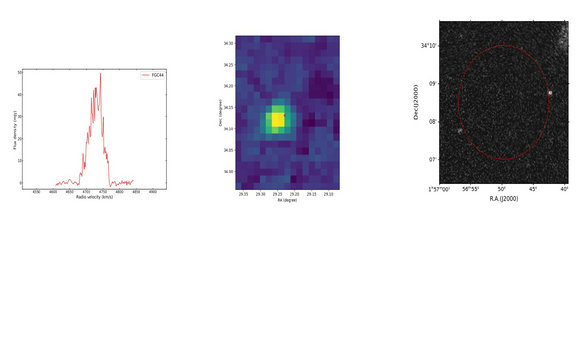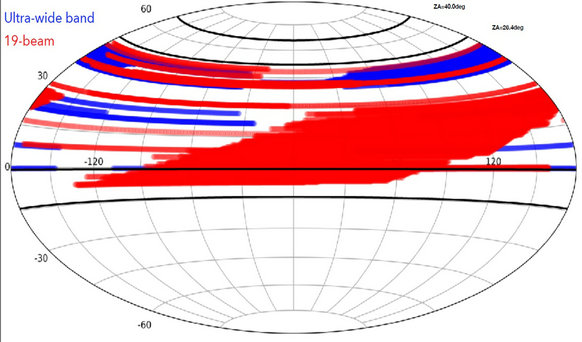Hunting for dark galaxies with FAST
Large scale neutral hydrogen (HI) survey of the local universe is one of the major science drive for the Five-hundred Meter Aperture Spherical radio Telescope (FAST) project. As pointed out by Prof. Rendong Nan, the founder and the late Chief Scientist & Chief Engineer of the FAST project, the FAST HI survey can address many important astrophysical questions, such as investigating the extent of HI disks; studying the extended rotation curve to unprecedented distance; mapping out the distribution of dark matter in the local group; searching for low mass galaxies in void regions; and detecting Cold Dark Matter Satellites and possible HI companions.
The FAST HI survey team, led by Dr. Ming Zhu from the FAST Operation and Development Center at the National Astronomical Observatories of the Chinese Academy of Sciences (NAOC), has been actively scanning the sky ever since FAST's open for operation in January 2020. The researchers made the first data release on June 19 in a paper published on Research in Astronomy and Astrophysics, which is a peer-reviewed international journal in astronomy and astrophysics supported by NAOC and the Chinese Astronomical Society, and has a distinguished editorial board with extensive academic qualifications, ensuring high academic standards and a broad international coverage.
"This is a pilot study to test the observational strategy and data reduction pipeline for the large scale HI survey, and the results demonstrate that FAST indeed has a high survey speed and can obtain HI spectrum with higher spectral resolution than previous surveys such as those using the Arecibo 305-meter telescope. The FAST pointing accuracy and data quality can fully meet its technical specification," said Dr. Ming Zhu, the corresponding author of the paper.
The catalog release from the pilot survey contains 544 HI detected galaxies. The most interesting result is that 16 of FAST detected sources have no optical counterparts, which means that FAST can discovery galaxies possible missed by optical telescopes.

Figure1: FAST found “dark” galaxies not seen in optical telescopes. Left and middle panels are FAST observed HI spectrum and image, the right panel is an optical image. (Image by Jiangang Kang)
"These types of objects are very interesting to galaxy formation theory. They may represent a new type of objects that contains dark matter and HI gas but little stars, e.g. an object with large amount of gas but fail to form stars. Such type of object is predicted by cosmology models but has never been really confirmed by observations," as pointed out by Zhu.
The FAST HI survey can potentially discover such objects. However, beside the neutral hydrogen 21cm observations with FAST, very deep optical observations with a large telescope are also needed to confirm whether the seemingly "dark" galaxies really have no optical emissions.
Beside dark matter, galaxy is composed of gas and stars. A major part of the gas is in the form of neutral hydrogen which is visible only to radio telescopes through an emission spectral line at 21cm wavelength. Optical telescopes can see the star component of galaxies and optical surveys have revealed millions of galaxies in the universe. However, only 35000 or so gas galaxies have been detected.
Equipped with a 19-beam array receiver, and combined with the super high sensitivity owing to its large collecting area, FAST is the most powerful survey machine in the work for exploring the HI universe. After the first data lease, the FAST extragalactic HI survey is now running on a full speed, and has the potential to discover hundred thousands of gas galaxies and peculiar objects, such as dark galaxies, tidal tail filaments, accretion streams, and ultra-diffuse dwarf galaxies. More exciting discoveries are expected in the near future.
This study can be accessed at https://iopscience.iop.org/article/10.1088/1674-4527/ac6796

Figure 2: Sky coverage of the FAST HI survey. Red color area is observed using the 19-beam receiver, while the blue area is observed with an ultra-wide band receiver. (Credit: FAST HI survey team)